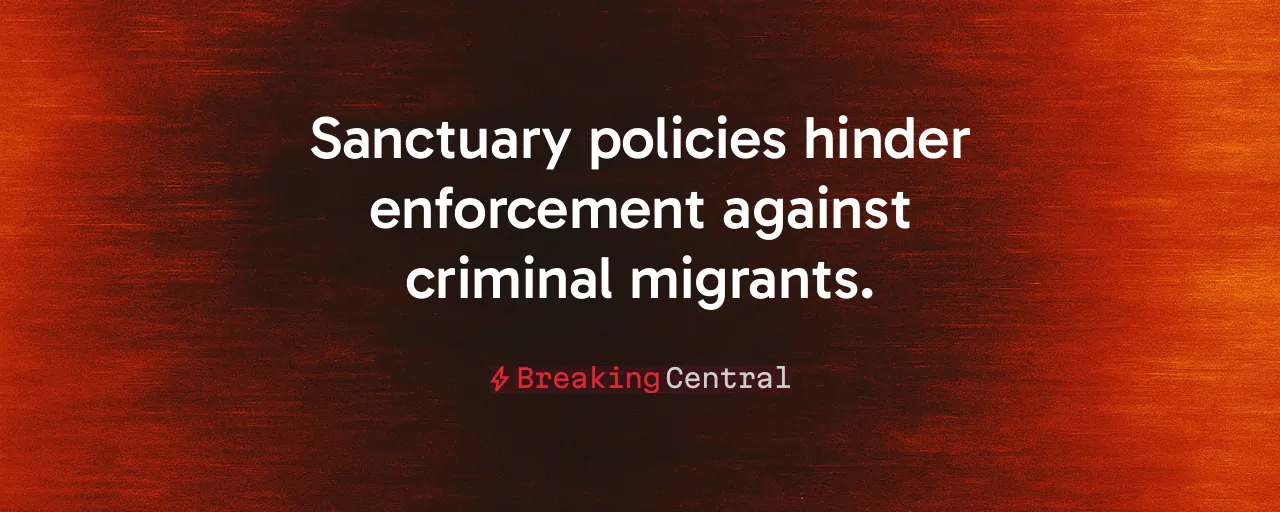A Border in Chaos
Tom Homan, the U.S. Border Czar, issued a warning on July 7, 2025, amplified by commentator Benny Johnson: arresting 3,000 criminal non-citizens daily is insufficient to address the consequences of prior immigration policies. Homan insists that 7,000 arrests a day are needed just to catch up with the undocumented migrants released into the country between 2021 and 2024. His claim has sparked debate, highlighting a crisis requiring urgent attention.
Statistics reveal a challenging situation. Under the Biden administration, border encounters soared to 2.5-3.2 million annually, with two million 'gotaways' slipping past authorities. At the same time, arrests of criminal aliens plummeted, which has left communities vulnerable. Homan's call for aggressive enforcement reflects a broader demand for restored order and public safety.
Beyond the statistics, the issue involves families living in fear of gang violence, towns overwhelmed by fentanyl deaths, and a legal system strained by unchecked migration. The debate over arrest quotas addresses fundamental questions about securing a nation while grappling with economic and humanitarian realities.
The Case for Stepping Up Enforcement
Immigration and Customs Enforcement (ICE) data indicates a significant trend. From 2021 to 2023, arrests of non-citizens with criminal convictions dropped 57%, and removals fell 67% compared to 2017-2019. This decline coincided with record border crossings and a surge in 'gotaways,' many of whom are tied to cartels exploiting weak enforcement. Homan argues that large-scale arrests are necessary to reverse this trend and remove threats like gang members and drug traffickers.
Fentanyl, much of it smuggled through porous borders, has fueled an overdose crisis killing thousands yearly. Customs and Border Protection seized record amounts in recent years, but the flow continues. Targeted raids in sanctuary cities, where local governments often shield fugitives, may disrupt these networks and deter further illegal crossings.
National security is a key concern. While terrorism risks at the border remain low, even one breach is too many. Doubling arrests to 7,000 daily, as Homan proposes, could signal zero tolerance for those who flout the law, and restore respect for a system that has been significantly strained.
Sanctuary Cities and Stalled Progress
Local resistance complicates enforcement. Sanctuary jurisdictions, from Los Angeles to Chicago, limit cooperation with ICE, blocking detainers that would transfer dangerous offenders. These policies, rooted in distrust of federal overreach, allow repeat offenders to evade capture, undermining efforts to protect communities.
Expanding 287(g) agreements, which deputize local police to assist ICE, could bridge this gap. Urban leaders, however, argue that such measures erode trust, deterring immigrants from reporting crimes. The tension between federal and local priorities creates a patchwork system where enforcement varies by zip code, leaving rural and border-state residents feeling abandoned.
Economic and Social Stakes
Scaling arrests to 7,000 daily would be costly. The Government Accountability Office estimates every 1,000 additional arrests requires 8,000 detention beds and $3-4 billion annually. Private prison operators stand to gain, but taxpayers bear the cost. Supporters, however, argue that the price of inaction, crime, strained schools, and overwhelmed hospitals, is far steeper.
Raids could disrupt industries like agriculture and construction, which rely on undocumented labor. Economists warn that mass removals might spike consumer prices and worsen labor shortages. A balanced approach, pairing enforcement with an updated guest-worker program, could stabilize markets while addressing security concerns.
Learning From the Past
History offers lessons. Under President Trump's first term, ICE averaged 128,000 criminal-alien arrests yearly, a pace that slowed under Biden's narrower priorities. Operations like Gatekeeper in the 1990s showed that concentrated enforcement can deter crossings, but they also sparked backlash over civil liberties. Homan's strategy, aiming to overwhelm cartels and smugglers, echoes these efforts.
Past sweeps often netted non-criminal residents, fueling distrust. Today's push for 7,000 arrests must focus tightly on gang members, traffickers, and fugitives to avoid repeating those mistakes while delivering measurable results.
A Path to Order
Homan's 7,000-arrest target is a bold step toward reclaiming control, but it is not the complete answer. Tripling detention beds, fast-tracking deportations, and reviving 'Remain in Mexico' policies would amplify impact. Mandatory E-Verify could deter illegal hiring, while stricter penalties for sanctuary cities would ensure compliance.
Compromise is possible. Boosting immigration court funding to clear backlogs, prioritizing fugitives with serious convictions, and offering provisional work permits to non-criminal migrants pending hearings could ease tensions. These steps balance enforcement with economic realities, ensuring communities stay safe without destabilizing labor markets.
The border crisis tests the nation's resolve. Homan's warning is clear: half-measures will not suffice. By targeting criminal networks, securing borders, and restoring legal order, the U.S. can protect its citizens and rebuild trust in a system that has been pushed to its limits.
